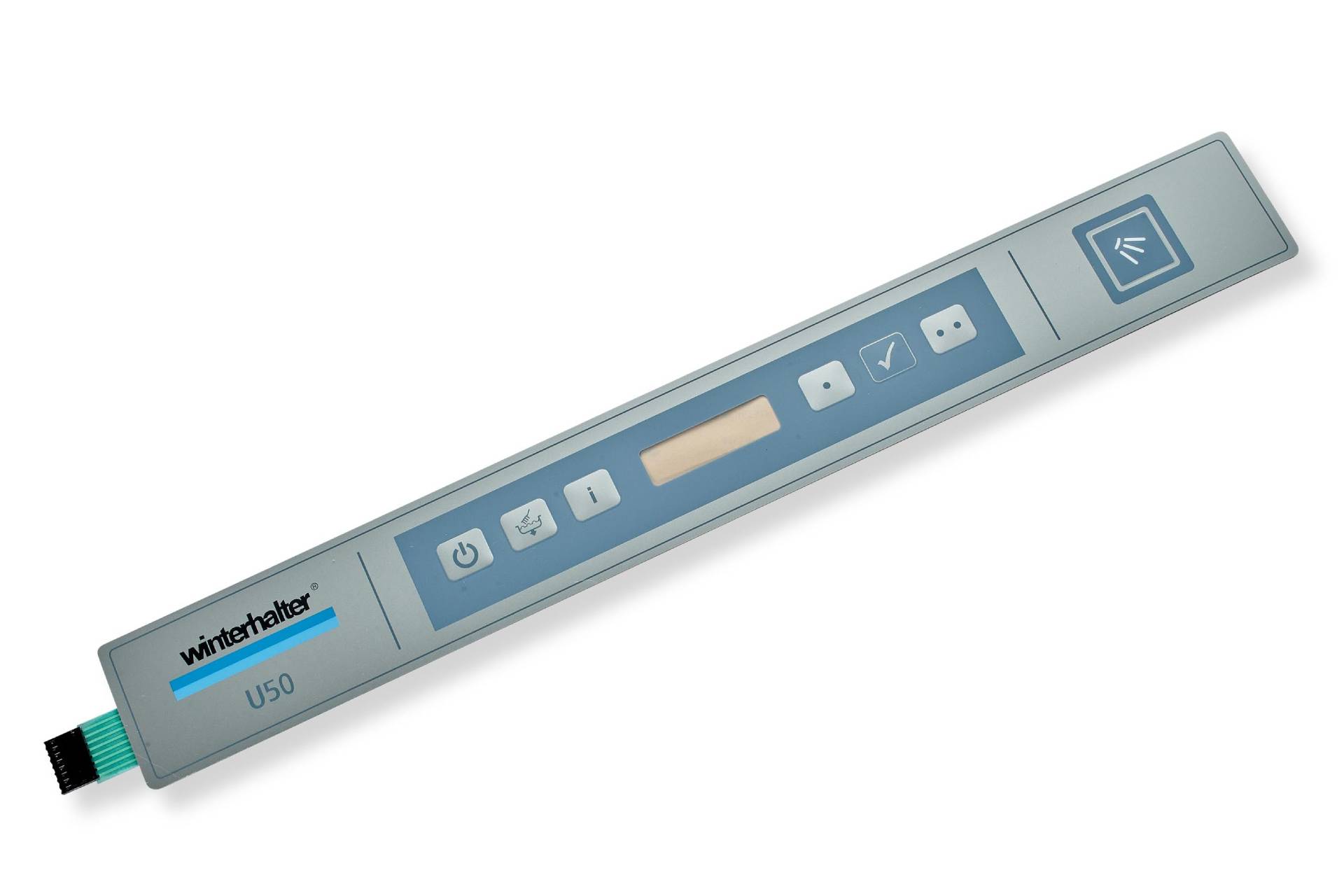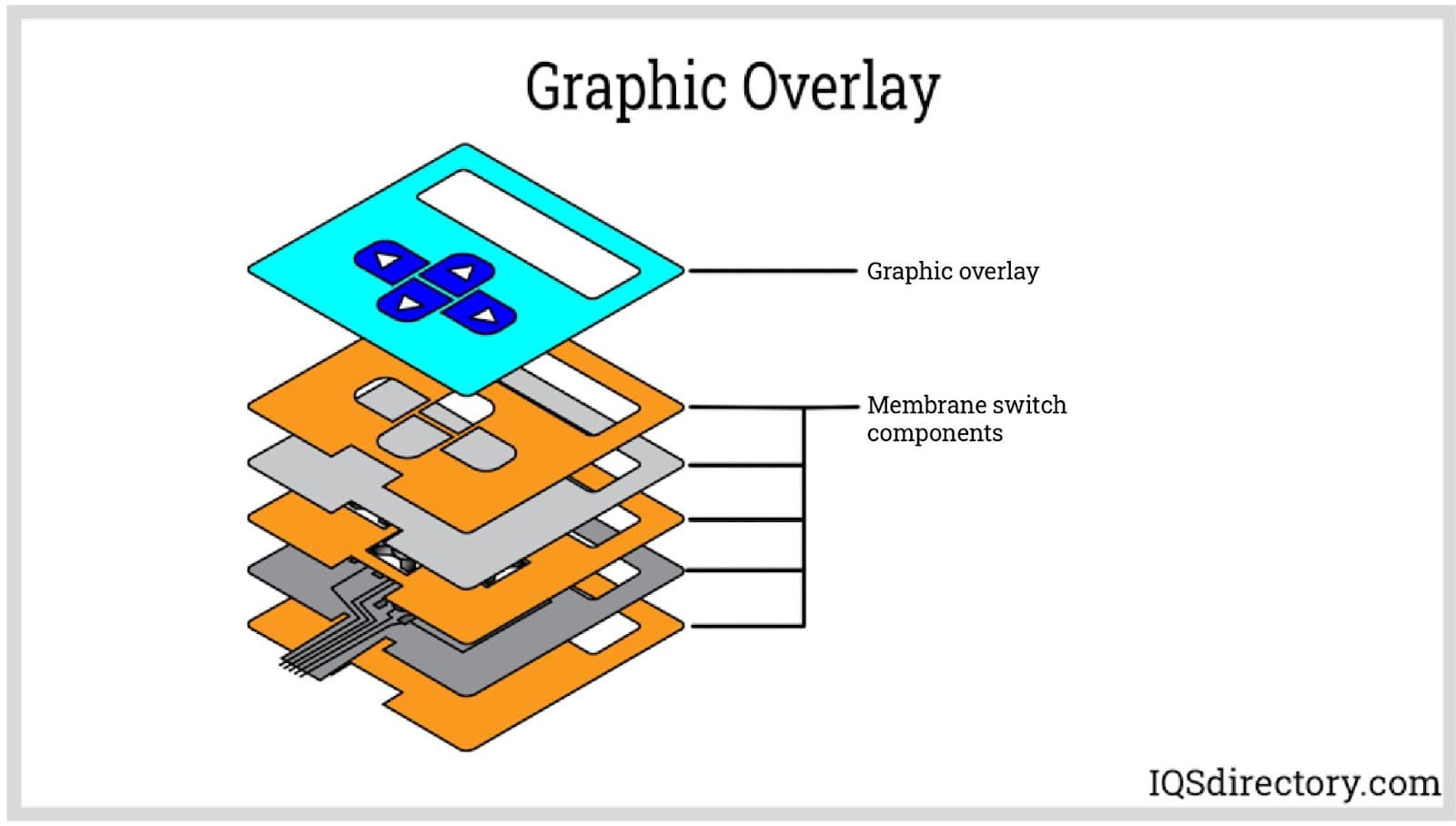Membrane switch integration strategies for automated manufacturing
Comprehending the Importance of Membrane Switch in Modern Electronic Devices
Membrane buttons are essential components in modern digital devices. They provide a blend of functionality and layout that improves user interaction. Their resilient and lightweight nature makes them suitable for numerous applications. As industries evolve, the demand for customization and progressed functions grows. Comprehending how membrane layer changes add to technology reveals their importance fit the future of electronics. What exists ahead for this modern technology?
The Fundamentals of Membrane Layer Switch Over Innovation
Often ignored, membrane layer button modern technology plays a crucial role in the modern electronic devices landscape. These devices, made up of several layers, function as interface for various electronic products, varying from family devices to medical equipment. A normal membrane switch consists of a graphic overlay, a spacer layer, and a circuit layer, which are carefully assembled to create a practical interface.When stress is related to the overlay, the circuit layer is finished, enabling signals to be transferred to the tool. This innovation is known for its versatility, making it possible for personalization in design, form, and capability to meet specific individual requirements. In addition, membrane switches are slim and lightweight, making them suitable for applications where area is a costs. Their sturdiness and resistance to environmental factors even more improve their appeal, ensuring they can withstand harsh conditions while maintaining performance. Overall, membrane button technology is essential to producing efficient and straightforward digital tools

Secret Advantages of Membrane Layer Changes
Membrane changes offer several key advantages that make them a recommended choice in various electronic applications. Their design enables a small form aspect, enabling producers to produce lightweight and streamlined devices. In addition, membrane layer switches are resistant to dust, moisture, and chemicals, which boosts their resilience and longevity in demanding settings. The tactile feedback supplied by these switches can enhance customer experience, making them very easy and instinctive to operate.Furthermore, membrane switches can be customized with diverse graphics and colors, permitting distinct branding chances. The manufacturing process is typically cost-efficient, especially for high-volume production, as it lowers assembly time and simplifies style. Membrane switches over require marginal upkeep, contributing to lower overall operational prices. These benefits emphasize their expanding popularity in contemporary electronics, where reliability and user-friendly interfaces are important.

Applications Throughout Various Industries
The flexibility of membrane layer switches allows their prevalent adoption across various sectors. In the clinical field, they are frequently used in diagnostic devices and patient surveillance systems, offering a resilient user interface immune to pollutants. The automobile market uses membrane layer buttons for dashboard controls, boosting customer experience with sleek designs that endure severe conditions. In customer electronic devices, they offer as control panels for devices such as microwaves and coffee makers, providing an user-friendly user interface that is very easy to tidy. The aerospace market utilizes membrane buttons in cabin controls, where reliability and area performance are vital. In addition, the industrial industry leverages these buttons in equipment and control systems to ensure durable operation popular atmospheres. This broad series of applications emphasizes the flexibility of membrane buttons, making them important elements in boosting functionality and individual interaction across diverse technical landscapes.
Customization and Layout Versatility

Future Trends in Membrane Change Advancement
Arising trends in membrane layer switch development show an expanding emphasis on boosted functionality and integration with smart innovations. As consumer demand for extra advanced digital tools rises, suppliers are concentrating on creating membrane switches over that not only serve basic operational duties yet additionally include features like touch level of sensitivity, backlighting, and haptic feedback.Furthermore, developments in materials are anticipated to enhance resilience and environmental resistance, making membrane layer switches suitable for varied applications in industries such as health care, auto, and consumer electronics. The integration of capacitive touch modern technology is most likely to end up being a lot more common, permitting for sleeker styles and enhanced individual interfaces. membrane switch.Additionally, the surge of the Web of Things (IoT) is prompting the advancement of membrane layer changes that can communicate wirelessly with other gadgets, boosting interconnectivity. Generally, the future of membrane switch technology shows up encouraging, driven by innovation and the pursuit of user-friendly solutions
Frequently Asked Inquiries
Exactly How Do Membrane Switches Contrast to Standard Mechanical Switches?
Membrane layer switches, being extra space-efficient and Click This Link supplying a streamlined style, contrast with typical mechanical switches that offer tactile responses. The former frequently feature personalized graphics, while the latter generally guarantee longevity and reliability in different applications.
What Materials Are Generally Utilized in Membrane Change Production?
Membrane layer switches are commonly created using materials such as polyester, polycarbonate, and published conductive inks. These materials give toughness, flexibility, and responsiveness, making them suitable for various applications in digital tools and individual interfaces.
Can Membrane Layer Switches Be Repaired or Recycled?
Membrane switches can typically be repaired, particularly if minor concerns emerge, such as glue failing or surface damage. Total reuse is normally restricted due to wear and potential destruction of materials over time.
Just How Do Ecological Aspects Impact Membrane Switch Performance?
Environmental factors, such as temperature level, exposure, and this content humidity to chemicals, greatly affect membrane switch efficiency. Extreme problems can result in degradation, impacting responsiveness and longevity, eventually endangering the performance of the tool in different applications.
What Is the Typical Lifespan of a Membrane Layer Switch?
The normal life-span of a membrane button generally ranges from 1 to 5 million actuations, relying on aspects such as use regularity, environmental problems, and the materials utilized in production, influencing sturdiness and performance longevity. A normal membrane layer button consists of a graphic overlay, a spacer layer, and a circuit layer, which are thoroughly constructed to create a practical interface - membrane switch.When pressure is used to the overlay, the circuit layer is finished, permitting signals to be sent to the device. The tactile comments supplied by these buttons can boost customer experience, making them easy and intuitive to operate.Furthermore, membrane switches can be personalized with diverse graphics and colors, allowing for distinct branding chances. As customer need for extra innovative digital tools rises, suppliers are concentrating on producing membrane layer changes that not only serve basic functional duties but additionally include attributes like touch level of sensitivity, backlighting, and haptic feedback.Furthermore, improvements in materials are expected to improve durability and ecological resistance, making membrane layer changes appropriate for diverse applications in industries such as health care, vehicle, and customer electronics. The integration of capacitive touch technology is index likely to become extra common, enabling for sleeker styles and enhanced user interfaces.Additionally, the surge of the Internet of Points (IoT) is prompting the development of membrane changes that can communicate wirelessly with various other devices, enhancing interconnectivity. Membrane layer switches, being more space-efficient and supplying a streamlined style, comparison with standard mechanical switches that give tactile responses